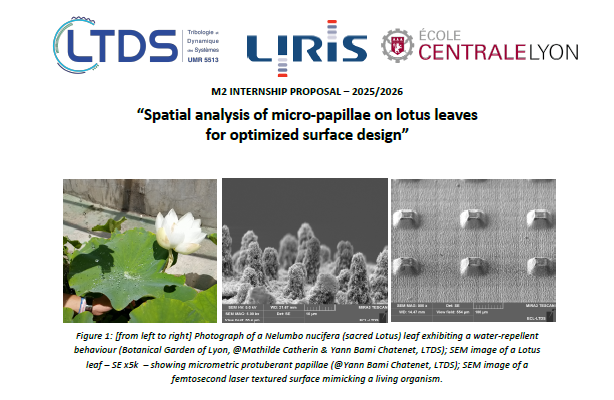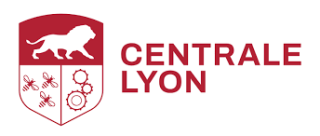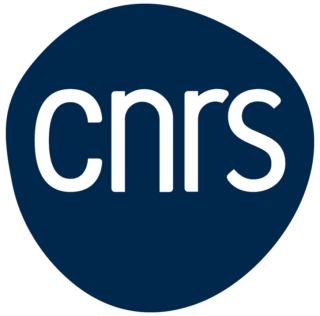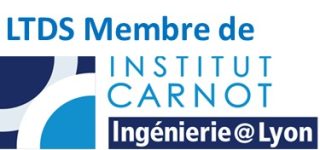
Starting date: typically march 2026
Duration: 5/6 months
Location: École Centrale de Lyon, 69130 Ecully, France
Keywords: Bio-inspired surface, Image processing, Pattern recognition,
Spatial distribution analysis/optimization, Voronoï surfaces
Funding: 650€ / month (net)
Scientific context:
Many industrial applications require superhydrophobic surfaces to prevent contamination, such as antibacterial, antifouling, or anti-icing coatings. Currently, the most efficient industrial strategy relies on perfluorinated compounds (e.g., PTFE) to reduce surface tension. However, these compounds are persistent pollutants, raising serious environmental concerns. In contrast, nature offers more sustainable solutions. The sacred lotus leaf (Nelumbo nucifera) (see figure 1, left), for instance, remains clean and water-repellent thanks to its unique multiscale surface structure [1]: micrometric papillae covered with a 3D nanostructured wax layer (see figure 1, middle). This morphology, combined with a naturally hydrophobic chemistry, promotes a Cassie–Baxter wetting state, where water droplets rest only on the top of the papillae, trapping air beneath [2,3].
Our team has developed analytical models to describe how air pockets remain stable between microand nanostructures. These models suggest that nanoscale features enhance the curvature of the
meniscus, leading to more stable air retention and resistance to higher pressures. However, experimental validation is still needed to confirm these theoretical predictions [4].
To promote and stabilize the Cassie–Baxter regime, we are developing robust superhydrophobic surfaces by combining femtosecond laser texturing with thermochemical treatments (see figure 1,
right). The resulting surfaces will be characterized in terms of chemical composition, surface morphology, and wetting properties (static and hysteresis contact angles).
- Barthlott W. et al, « Plant surfaces: structures and functions for biomimetic innovations », Nanomicro Lett.,
9, 2017, 1-40 - Bami Chatenet Y. and Valette S., « Mechanical criteria and analytical modeling of mixed-state wetting on multiscale surfaces: Of the importance of nanoscale topography for water-repellency », Colloids Surf. A: Physicochem. Eng. Asp., 672, 2023, 131752
- Bami Chatenet Y. and Valette S., « Critical pressure versus mechanical criteria for the analytical modeling of wetting on multiscale surfaces « , Colloids Surf. A: Physicochem. Eng. Asp., 2023 [Accepted manuscript. DOI: 10.1016/j.colsurfa.2023.132877]
- Garcia-Gonzalez D. et al., “Squeezing drops: Force measurements of the Cassie-to-Wenzel transition”, Langmuir, 38, 2022, 14666-14672
Objective of the internship:
The objective of this internship is to investigate the spatial distribution of micro-papillae on the sacred lotus (Nelumbo nucifera) leaf. The work will be based on the quantitative analysis of grayscale
Scanning Electron Microscopy (SEM) images. Through advanced image processing techniques (pattern recognition, morphological and texture analyses, Voronoï surfaces), the intern will extract and
characterize the geometrical features of the micrometric patterns as well as their spatial organization across the surface.
The outcomes of this study will contribute to the development of a bio-inspired surface model designed to reproduce the superhydrophobic behaviour observed in natural lotus leaves. This work
will thus support a better understanding of the relationship between surface morphology and wetting properties, with potential applications in the design of functional engineered surfaces.
The internship being proposed as part of a LIRIS/LTDS collaboration, the candidate must be able to discuss with the LTDS teams for the manufacture of super-hydrophobic surfaces as well as for SEM images.
Candidate profile:
The student must be enrolled in a Master’s program in Computer Science or Signal and Image Processing, or be pursuing an equivalent level of education and skills (e.g., engineering school final
project).
They should demonstrate the ability to program independently, preferably in Python. Skills in image processing and optimization are expected. He/she will have to demonstrate a large scientific curiosity due to the multidisciplinary character of this internship. The student will have to demonstrate rigor, independence, and capacity to restitute information and obtain results. Qualities in oral and written redaction in English are expected; the final report will have to be written in English.
Contact:
Supervisors:
Stéphane DERRODE (ECL, LIRIS, Professor)
Stéphane VALETTE (ECL, LTDS, Professor)
Alexandre Saidi (ECL, LIRIS, Assistant Prof.)
To apply please send a CV, your Master grades and a cover letter to stephane.valette@ec-lyon.fr AND to stephane.derrode@ec-lyon.fr. We will review the applications on the fly so you may apply or contact us as soon as possible.
Please note that candidates must be referred through the FSD (Fonctionnaire Sécurité Défense) for recruitment.




